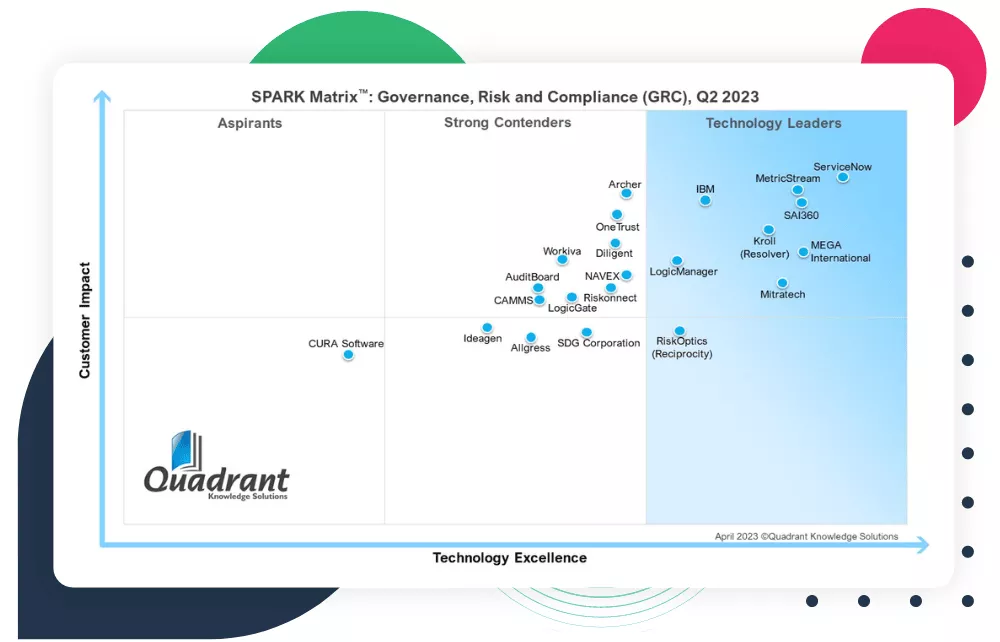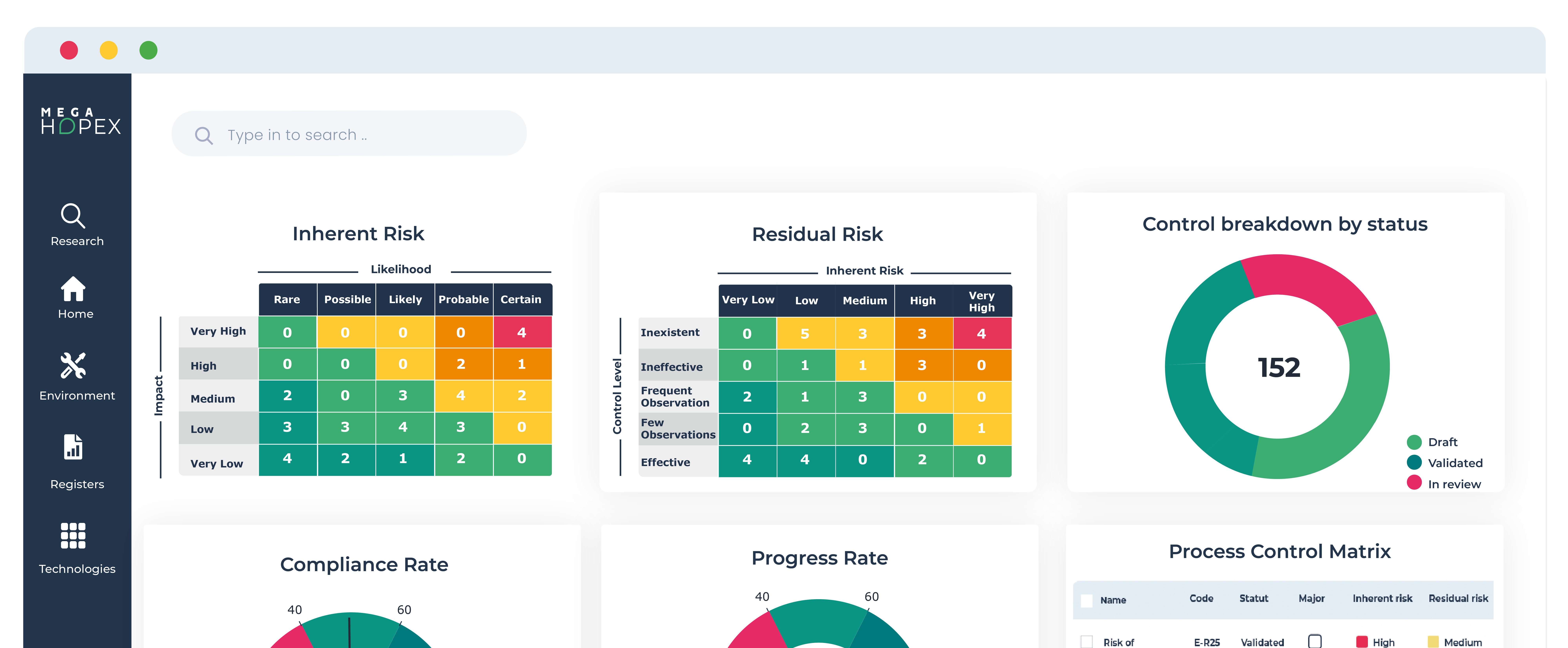
Five Pillars Explained: Digital Operational Resilience Act: DORA
The importance of operational resilience for organizations cannot be overstated in the rapidly evolving digital landscape. Recognizing this, the Digital Operational Resilience Act (DORA) has been established to fortify the information and communications technology (ICT) frameworks of entities within the financial sector.
DORA's comprehensive approach is structured around five pivotal pillars, each designed to address distinct aspects of digital operational resilience. This article delves into these pillars, elucidating their significance and offering insights into their practical implementation.
ICT Risk Management
At the core of DORA's framework is ICT Risk Management, which mandates organizations to identify, assess, and mitigate risks associated with their ICT systems. This proactive approach ensures that potential vulnerabilities are addressed before they escalate into more significant issues.
Organizations are encouraged to adopt a holistic risk management process, including regular risk assessments, developing risk mitigation strategies, and continuously monitoring the ICT environment. By fostering a culture of risk awareness, entities can enhance their resilience against various digital threats.
ICT-related Incidents Management, Classification, and Reporting
This pillar emphasizes the importance of an organized approach to managing ICT-related incidents. It requires entities to establish and maintain robust mechanisms for promptly identifying, classifying, and reporting incidents.
This process not only aids in quickly resolving issues but also provides valuable insights that can prevent future occurrences.
Additionally, DORA advocates for transparent reporting practices, ensuring that relevant stakeholders, including regulatory authorities, are informed about significant incidents. This transparency is crucial for maintaining trust and for the collective strengthening of digital operational resilience across sectors.
Digital Operational Resilience Testing
Under DORA, organizations must conduct regular resilience testing to verify the effectiveness of their digital resilience strategies. This involves simulating various scenarios, including cyber-attacks, system failures, and other disruptions, to assess how well the ICT systems can withstand and recover from such events.
Through these tests, entities can identify weaknesses in their digital infrastructure and processes, enabling them to make informed adjustments. This continuous evaluation and enhancement cycle is vital for keeping pace with the evolving digital threat landscape.
ICT Third-Party Risk Management
Recognizing that the digital operations of many organizations are intertwined with third-party services, DORA places a significant emphasis on managing risks associated with these external entities.
Organizations are expected to conduct thorough due diligence on third-party service providers, ensuring that these partners also adhere to stringent digital resilience standards.
This pillar underscores the need for comprehensive contracts that clearly define the responsibilities and expectations regarding ICT risk management, incident handling, and resilience testing. Effective third-party risk management ensures the entire supply chain contributes positively to the organization's overall operational resilience.
Information and Intelligence Sharing
The final pillar of DORA promotes sharing information and intelligence related to cyber threats and vulnerabilities among organizations. By fostering a collaborative environment, entities can benefit from a collective pool of knowledge and experiences, enhancing their ability to anticipate and respond to digital challenges.
This shared understanding facilitates the development of best practices and the implementation of proactive measures, bolstering the digital operational resilience of individual organizations and the financial sector.
DORA's five pillars and HOPEX
HOPEX platform provides integrated solutions for managing enterprise governance, risk management, and compliance (GRC). In the Digital Operational Resilience Act (DORA) context, HOPEX can support financial entities in complying with the regulation's requirements. Here's how HOPEX can assist with DORA:

1. ICT Risk Management Framework
- Risk Identification and Assessment: HOPEX helps identify and assess ICT risks by providing tools to map the organization's digital landscape, including assets, processes, and third-party services. This enables financial entities to pinpoint vulnerabilities and assess their potential impact.
- Risk Mitigation Planning: The platform facilitates the development and implementation of risk mitigation plans.
2. Incident Management and Reporting
- Incident Tracking and Management: HOPEX offers capabilities for incident management, allowing organizations to record, track, and manage cybersecurity incidents efficiently. This is crucial for meeting DORA's requirements for incident response and recovery.
- Automated Reporting: The platform can automate the generation and submission of incident reports to regulatory authorities, ensuring that reports are timely, accurate, and comply with DORA's reporting guidelines.
3. Operational Resilience
- Continuity planning: HOPEX allows organizations to identify critical operations, build and test their continuity strategy, and monitor operational resilience.
- Testing and Scenario Analysis: HOPEX supports resilience testing by enabling organizations to simulate various cyber threat scenarios and assess the effectiveness of their response strategies. This helps identify gaps in the organization's resilience and make necessary adjustments.
- Documentation and Evidence Management: The platform assists in documenting the testing processes, findings, and corrective actions taken. This documentation is vital for demonstrating compliance with DORA's testing and audit requirements.
4. Third-Party Risk Management
- Vendor Risk Assessment: HOPEX can streamline the process of assessing and managing risks associated with third-party ICT service providers. It provides tools to evaluate vendor compliance with security standards and monitor ongoing risks.
5. Compliance Management and Reporting
- Regulatory Compliance Dashboard: HOPEX includes features for tracking regulatory compliance, offering dashboards and reporting tools that give an overview of the organization's compliance status with DORA and other relevant regulations.
- Gap Analysis and Remediation Tracking: The platform can facilitate gap analysis to identify areas where the organization falls short of DORA's requirements and track the progress of remediation efforts to address these gaps.
By leveraging HOPEX, financial entities can enhance their digital operational resilience, streamline compliance with DORA, and effectively manage the complex landscape of risks in the digital age. The platform's integrated approach to GRC helps organizations comply with regulatory requirements and strengthen their overall risk posture.
Summary
The Digital Operational Resilience Act (DORA) introduces a comprehensive framework designed to enhance the operational resilience of organizations operating within the financial sector.
By adhering to the requirements across its five pillars—ICT Risk Management, ICT-related Incident Management, Classification and Reporting, Digital Operational Resilience Testing, ICT Third-Party Risk Management, and Information and Intelligence Sharing— financial entities and ICT providers can fortify their defenses against the myriad digital threats they face.
Embracing these pillars contributes to the security and stability of individual organizations and the resilience of the broader financial digital ecosystem.
Strengthen cyber resilience with an integrated solution

A five-step approach to strengthen your company's cyber resilience, offering key benefits:
- Protect organizations from cyber disruptions
- Comply with cyber resilience regulations
- Align cyber resilience management with business objectives
- Maintain a proactive cyber resilience stance
Governance, Risk and Compliance Related Content
Enhance operational resilience using integrated risk management
MEGA HOPEX for GRC
Request a demonstration of HOPEX for GRC, and see how you can have immediate value of your projects.









